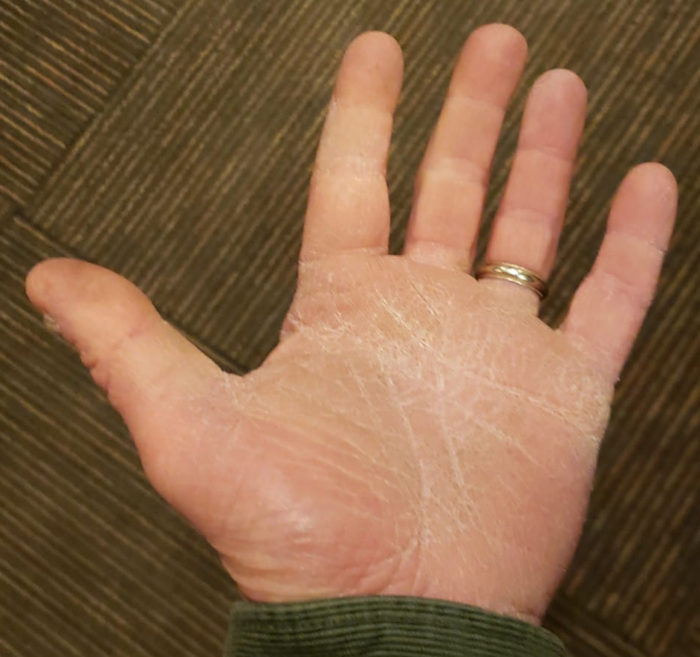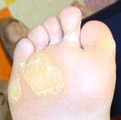Palmoplantar keratosis is a medical condition in which the skin of the palms of the hands and soles of the feet is thickened. Some people, who are not affected by ectodermal dysplasia, simply develop this symptom over time.
But, for people who are affected by the type of ectodermal dysplasia called Clouston syndrome, it’s a key feature of their syndrome, along with brittle, thinning hair and dystrophic nails.
Joe Rickle is affected by Clouston syndrome and describes the skin on his hands which is thickened.
“It’s funny because I’m a white collar engineer. When I shake hands with people, they ask if I work construction. My hands are like sand paper.”
– Joe

To help our Clouston families, we have published a new library article about palmoplantar keratosis by Sheetal Sethupathi, an M.D. candidate at Saint Louis University. It explains this skin condition, which is also known as palmoplantar keratoderma, and how to best treat it.
Download Palmoplantar Kerotosis Library ArticleWhy are your hands and feet also red?
Other families affected by palmoplantar keratosis have often asked why the skin appears so red.
Sethupathi explains in the library article that skin redness most often represents widening of small blood vessels near the surface of the skin. This can occur as a result of getting hot or from inflammation (e.g. irritation or infection). Download the article to learn how to minimize the reddening.
Palmoplantar Keratosis Treatment
People affected by Clouston syndrome report variability in their skin thickening. Some have it on the heels and palms. Others say they only have it on their heels. The skin issue may not appear until adulthood and may get worse over time.
I didn’t develop the rough palms and soles until my late 20s, and it gets worse as I get older.
– Joe
According to Sethupathi, “Current treatments can help improve appearance and function but cannot cure the condition.”
In the article, you can learn what to do to treat these areas and prevent painful fissures or breaks in the skin. If you are looking for ways to lessen your discomfort from palmoplantar keratosis, this article will help.
Do you experience palmoplantar keratosis?
Tell us what your skin has been like in the comments below and what has worked for you in treating it.

Excellent article!
Thanks, Joe, for the kind words and for being a part of it! ~ Jodi, NFED, Director, Marketing and Communications